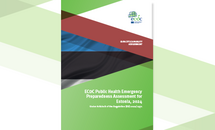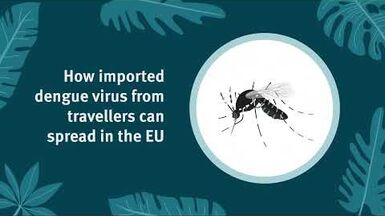Country report: ECDC Public Health Emergency Preparedness Assessment for Estonia, 2024 - Under Article 8 of the Regulation (EU) 2022/2371
ECDC has the responsibility, in coordination with relevant Union agencies and bodies, to conduct Public Health Emergency Preparedness Assessments of all European Union and European Economic Area (EU/EEA) countries every three years regarding the state of implementation of their national prevention, preparedness and response planning. This report presents the findings and recommendations of the first assessment conducted in Estonia.
Executive summary
Background
As stated in Article 8 of the Regulation (EU) 2022/2371 on Serious Cross-Border Threats to Health, ECDC has the responsibility, in coordination with relevant Union agencies and bodies, to conduct Public Health Emergency Preparedness Assessments of all European Union and European Economic Area (EU/EEA) countries every three years regarding the state of implementation of their national prevention, preparedness and response planning. This assessment is based on 16 capacities included in the template used by countries when providing information on their prevention, preparedness and response planning in accordance with Article 7 of the Serious Cross-Border Threats to Health regulation. The aim of the assessments are to improve prevention, preparedness and response planning in EU/EEA countries by implementing the recommendations following individual country assessments. Within nine months of receiving the ECDC assessment report, if applicable, countries are requested to provide an
action plan addressing the proposed recommendations of the assessment.
This report presents the findings and recommendations of the first assessment conducted in Estonia. The assessment involved a desk review of relevant documents, followed by a three and a half-day mission from 1 to 4 October 2024. The visit to the country was shorter compared to other missions because a Joint External Evaluation on core IHR capacities was conducted in Estonia in October 2023. The ECDC-led team assessed five capacities in depth and validated Estonia's responses to the Article 7 questions for the remaining capacities, while considering the results from the recent Joint External Evaluation. The five capacities assessed in depth were Laboratory capacity; Surveillance; Health Emergency Management; Zoonotic diseases and threats of environmental origin, including those due to the climate, and Antimicrobial resistance (AMR) and healthcare-associated infections (HAIs).
Key findings
The national-level legislation and policies cover processes for managing public health emergency events, including multi-sectorial and multidisciplinary aspects. Currently, Estonia is facing budgetary cuts, in addition to an already significant shortage of health workforce. Following the COVID-19 pandemic, significant investments were made in the Estonian laboratory capability and capacity, including the setting up and running of state-of-the-art technologies for whole genome sequencing and bioinformatic analysis. These capacity-building initiatives have a positive impact on preparedness for future emergencies and surveillance of communicable diseases. The surveillance for Acute Respiratory Infections (ARI), and Severe Acute Respiratory Infections (SARI) is very comprehensive.
Prevention, preparedness and response plans cover multiple hazards, ranging from the strategic to the operational level, and have been tested. A structured Incident Management System assigns the lead role in preparedness and response to health crises to the Health Board. Emergency logistics and supply chain management systems are in place at the national level for health emergency events. The stockpile mechanism is undergoing important reforms, aimed at further strengthening this capacity.
The legal basis for AMR and HAIs surveillance is solid and the overall AMR strategy and the Human Health National Action Plan on AMR has been drafted. However, the final legal framework should also address limitations with the current antimicrobial consumption data. There is no specific budget earmarked for the National Action Plan activities, but budget will be requested annually with operational plans. The Whole Genome Sequencing (WGS), performed by the national reference laboratory is used to support outbreak detection. During the assessment, challenges with infection prevention and control (IPC) and epidemiological training have been underlined. Without strengthened training and specialised workforce, existing structures for IPC, antibiotic stewardship and surveillance cannot be maintained.
Collaboration and coordination between the human health and animal health sectors are established for zoonotic disease surveillance, risk assessment, response, and communication. Food safety is part of the multi-sectorial collaboration in Estonia, but it was not covered by this assessment as these capacities are not part of the Serious Cross-Border Threats to Health regulation (Art 7 and Art 8). Key stakeholders are paying more attention to diseases associated with climate change, such as tick-borne and waterborne diseases which have been increasing in recent years.
Download





